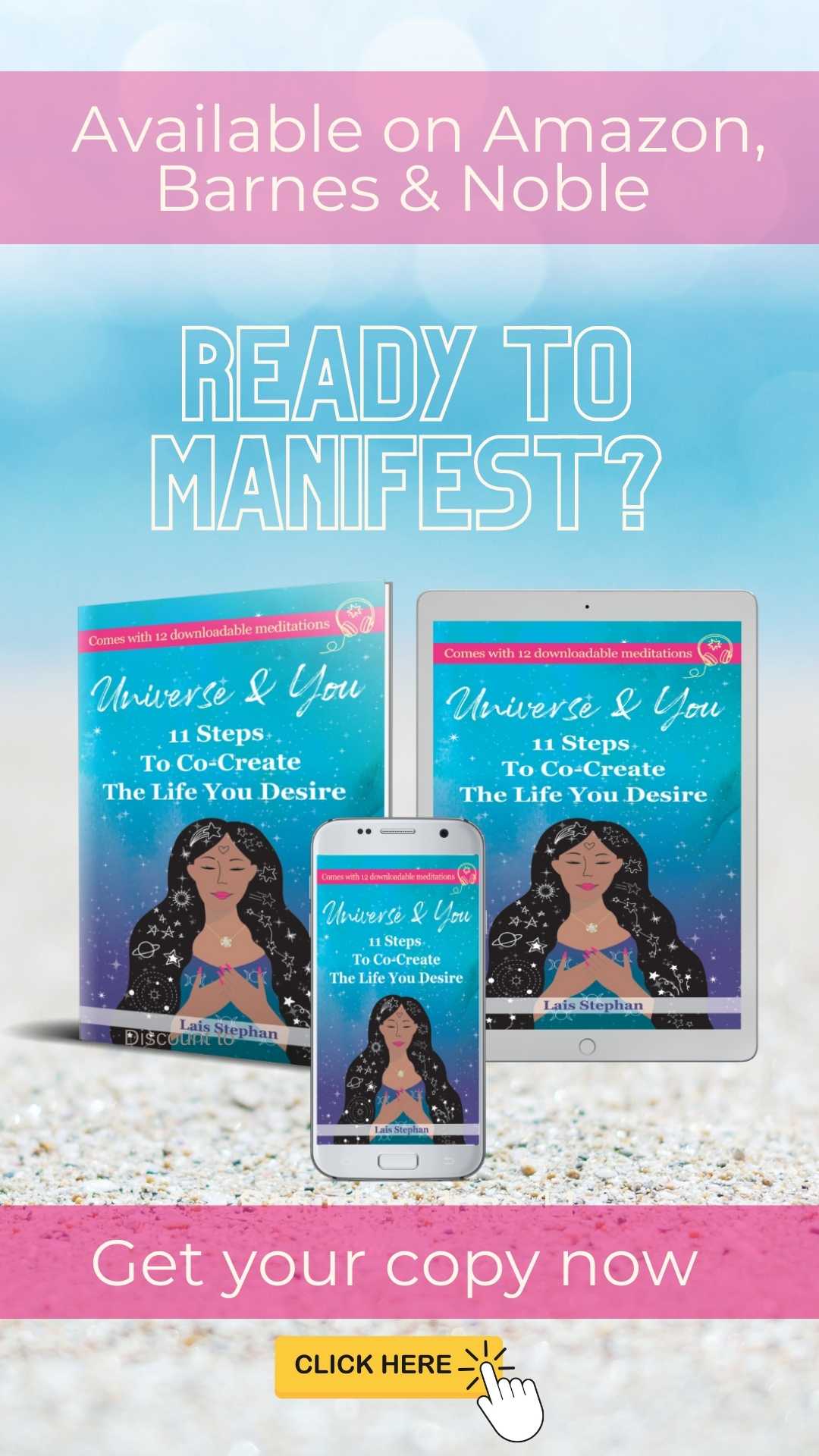Today, I have Ces Rosanna Price from “Inspired To Inspire” on my blog as a guest expert on all things visually engaging books, book covers, and illustrations. I asked her for this guest post because she was my designer for “Universe & You: 11 Steps To Co-Create The Life You Desire”.

As a qualified designer with over 25 years of experience, I have had the pleasure of designing book covers, book graphics, and book illustrations for both fiction and non-fiction books across many genres as well as workbooks and journals, all with a variety of target readers.
I have put together some top tips to help aspiring authors create an aligned and visually engaging book that really resonates with your ideal audience and fills your heart with joy.
Plan, Develop, and Prepare
There are different aspects to book design and the following structure can be followed to ensure you choose the right designs 🙂

We’ll be diving into these 3 steps below.
1. Plan

Note down or do brain storms (heart storms as I prefer to call them) for:
1. Who your readers are and what sort of styles and colours will resonate with them?
2. Identify what the main themes and messages of the book are.
3. Clarify how you want your readers to FEEL when they read your book.
2. Develop

The planning section may have sparked ideas and now it is time to develop them. Create mood boards inspired by the things you have written. You can do this by screen-grabbing elements online to make a pdf, using Pinterest, or making a physical mood board with paper pens and magazine cuttings. Pick out concepts, colours, and styles that resonate with you from the mood boards and start to develop those ideas, putting your own unique twist on any image or graphic to make sure it represents your book beautifully. The key is to choose things that will help your reader to understand the content or feel engaged with the story.
You can either do this work yourself and create visuals on a free app such as Canva, or you can commission a designer to help you if you are not sure what visuals will best enhance your book and portray the right image. Creating books is often a complete work of passion and when the content is close to your heart it is important to really love and connect to the visuals you choose. I offer LIVE DESIGN sessions creating in real time over screen share to ensure my clients are involved in the design process and LOVE the designs for their book.
3. Prepare

It’s important to make sure the visuals you have created are in the right size and format for Print or are Digital Ready (hyperlinks for ebooks / correct resolution and layouts for print etc.) Research the specifications and templates for your chosen distribution format. Images are generally required to be a minimum of 300 dpi for print and 150 dpi for digital. Book covers for print will have templates that vary based on size, amount of pages, barcode, and ISBN placement. It’s important to make sure your titles and important parts of images are within a ‘safe area’ on the template. Similarly if using any images inside a book, there is a layout and safe area to consider too. If you are creating a digital book that people may be printing out at home, ensure you don’t use too much heavy colour as this can use up a lot of ink.
The cover
Here are some different aspects of book design to consider:

Whether you are using an illustrated, graphic, or photo-edited style, choose a visual that captures the essence and heart of your book. Perhaps inspired by a vital moment or scene from the story or based on the positive focus or result of how the reader will be helped by or feel after reading your book. For printed books, consider how the cover will look as a whole including the back and spine of the book as well as the front cover image. Make sure titles and text are clear and easy to read, especially if appearing over an image
Key pages
Are there parts of the story or message that you really want the audience to feel and remember? Visuals can help readers to engage with and remember things. This could be in the form of info-graphics, charts, diagrams, character illustrations or setting a scene, or visuals that evoke emotion or inspire thoughts relating to the content. Consider if you want to add visuals to any ‘Call to action points’ within your book. These could be things such as bullet points, ticks, setting certain text into a border or decorative frame, using icons to identify sections of the book, or highlighting certain things for the reader to ‘do’ and take action on. Consider keeping things consistent throughout your book whilst complimenting the cover too, with content styling, icons, image types, chapter layouts, and so on.
Below are a few examples of key pages to inspire you!




Blog by Ces Rosanna Price
Find her on Facebook





